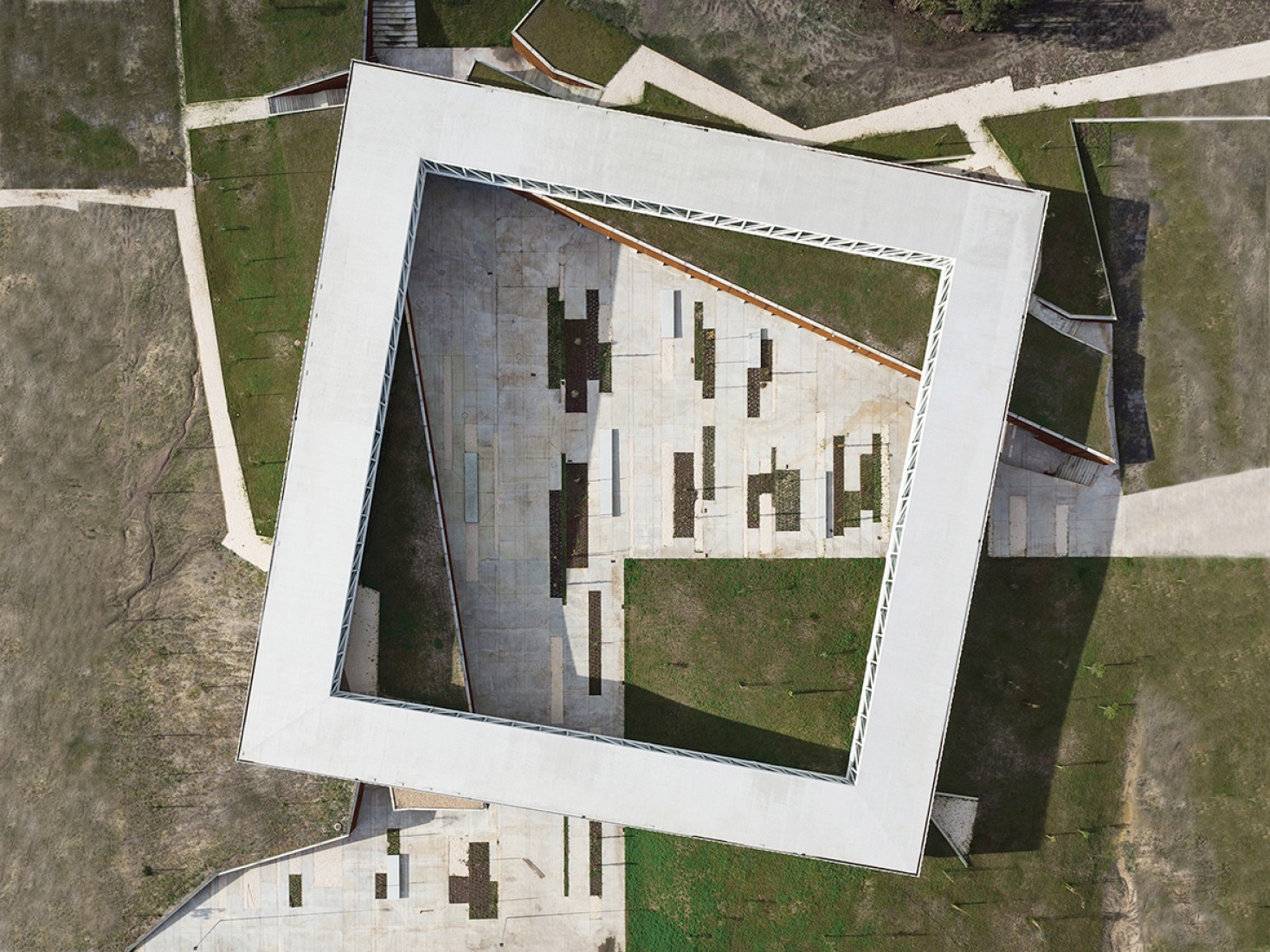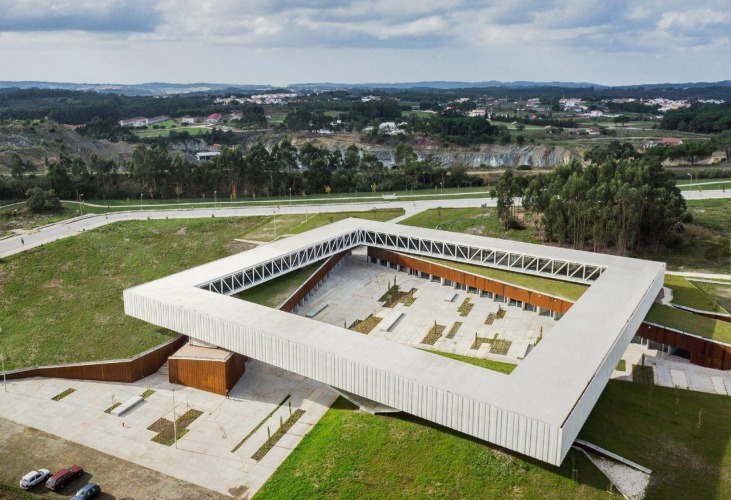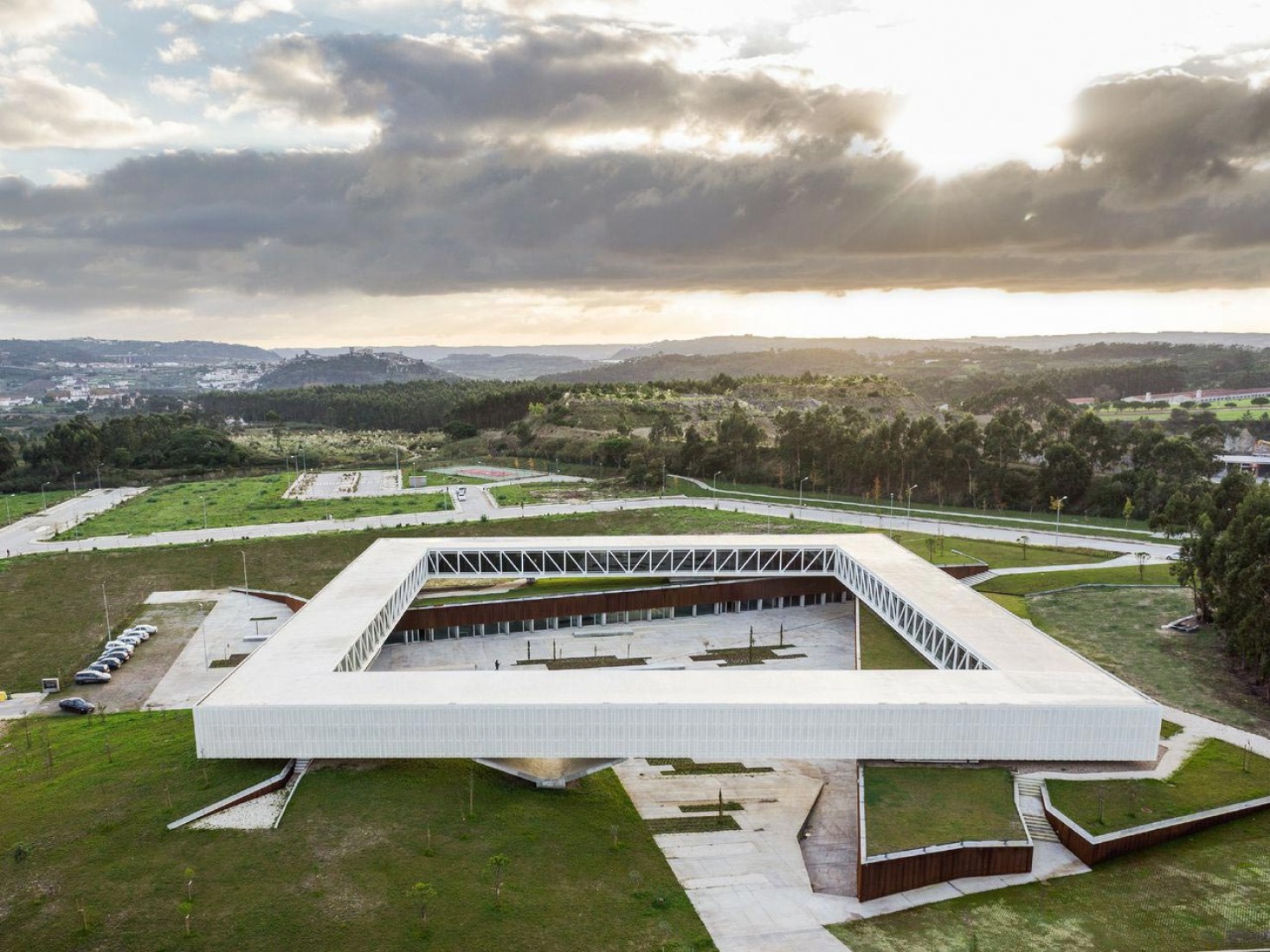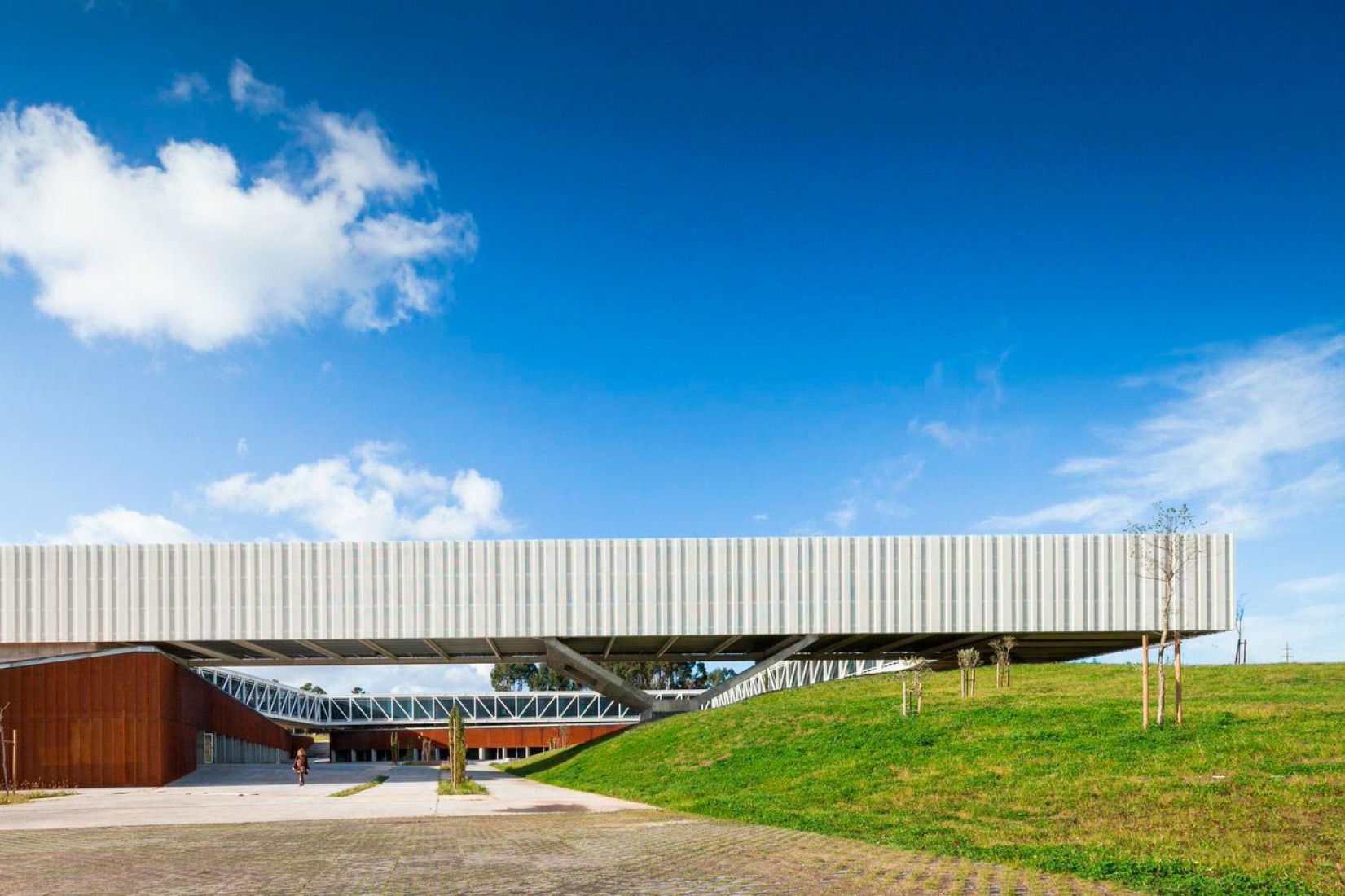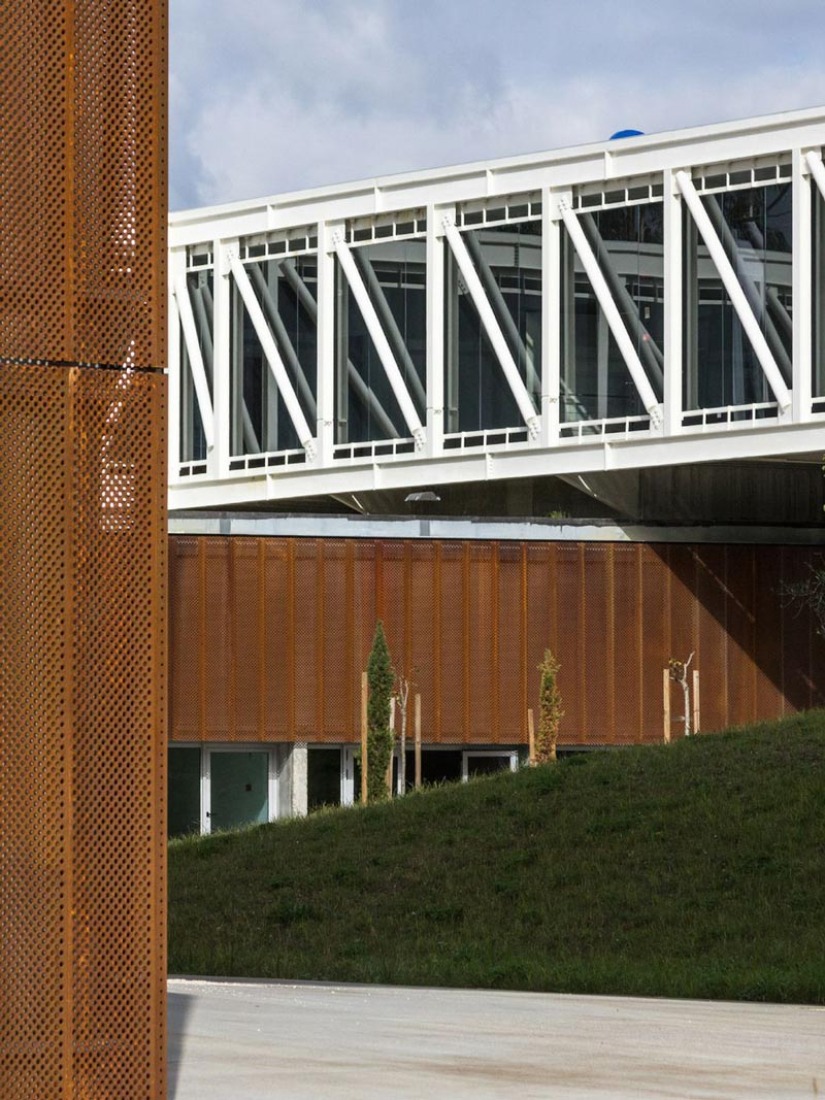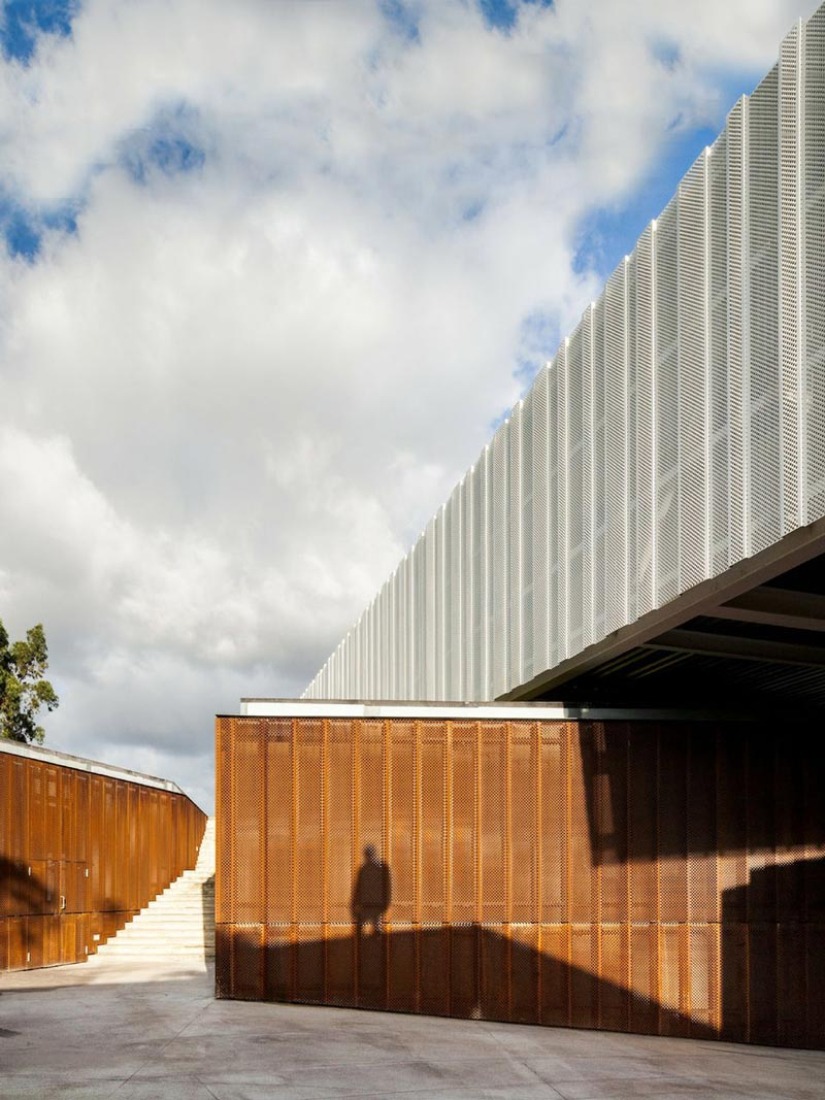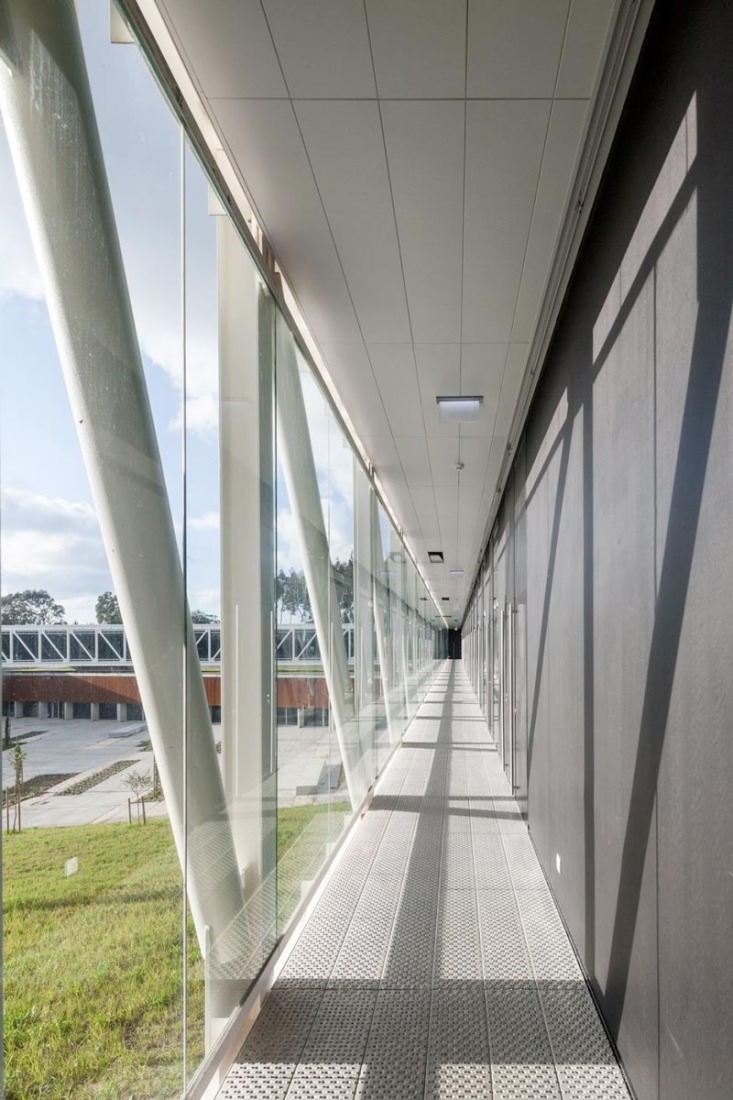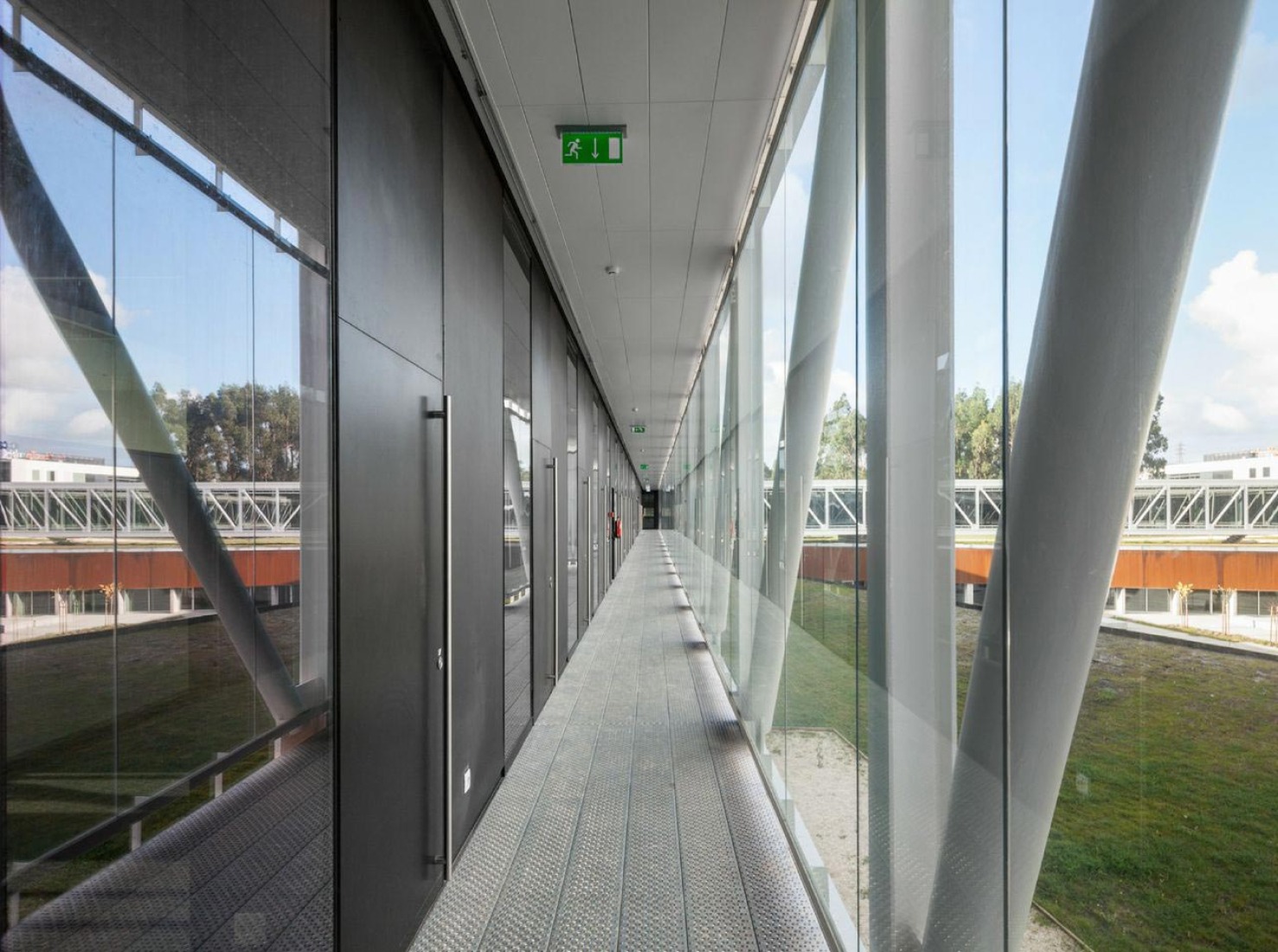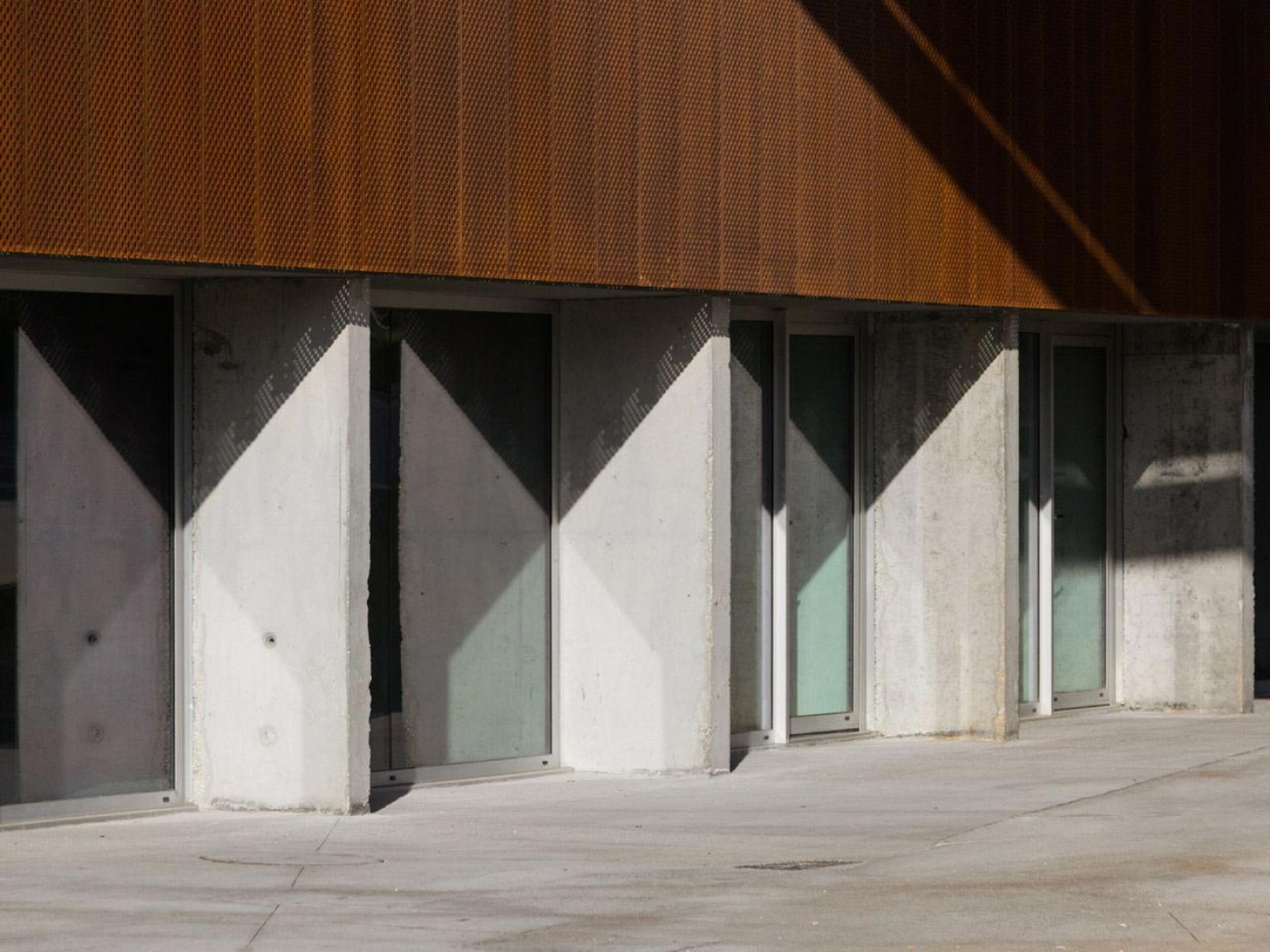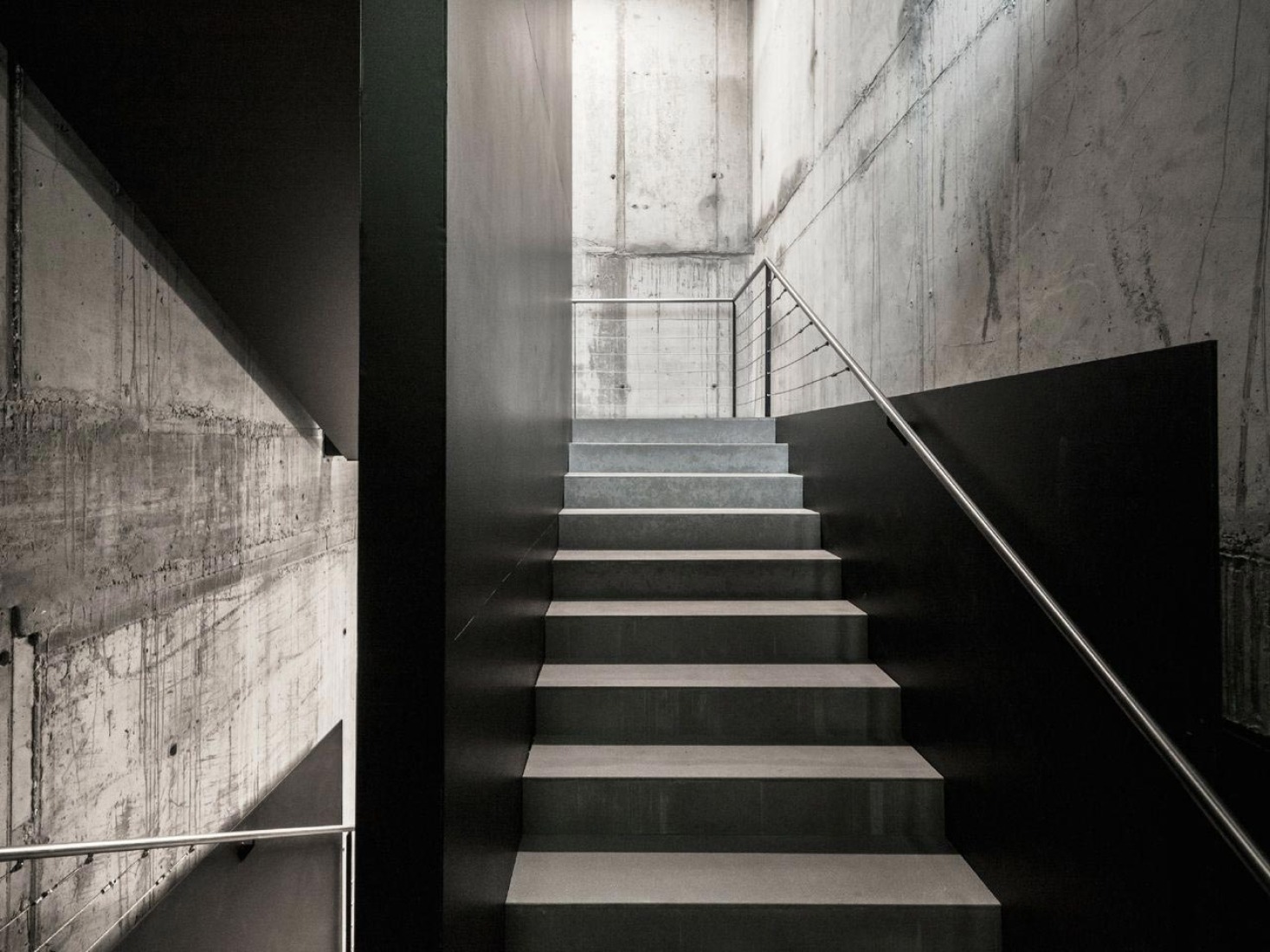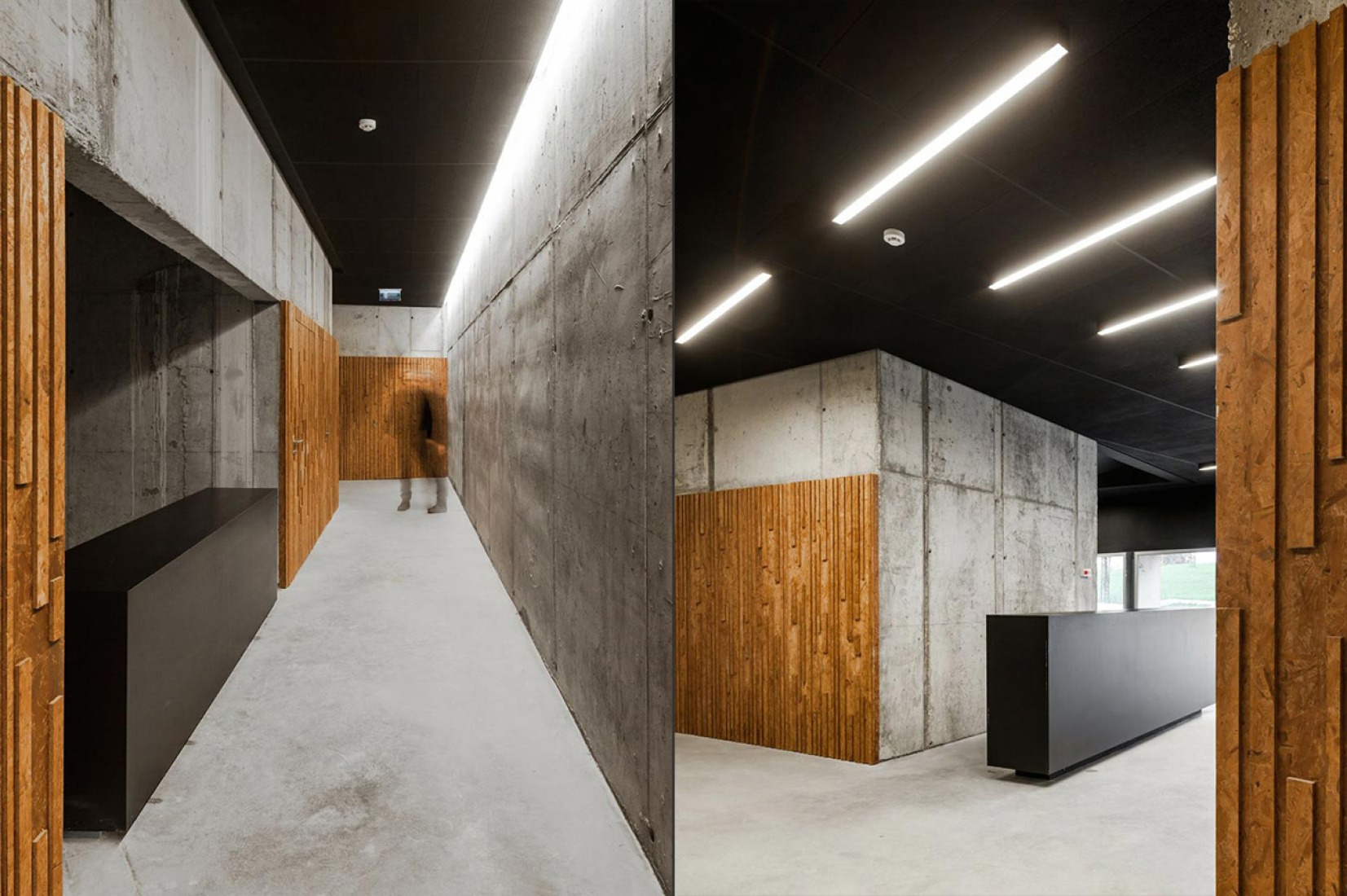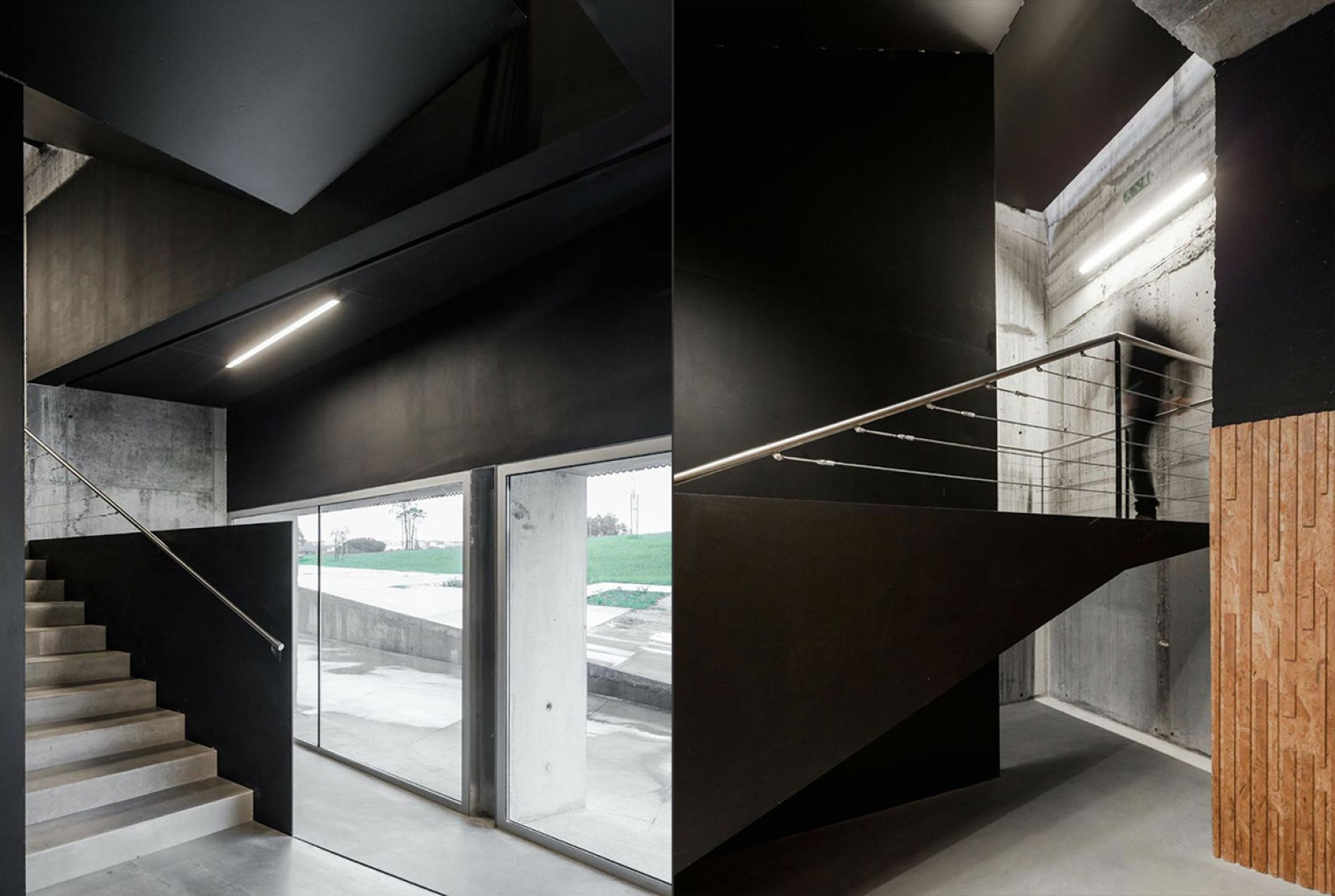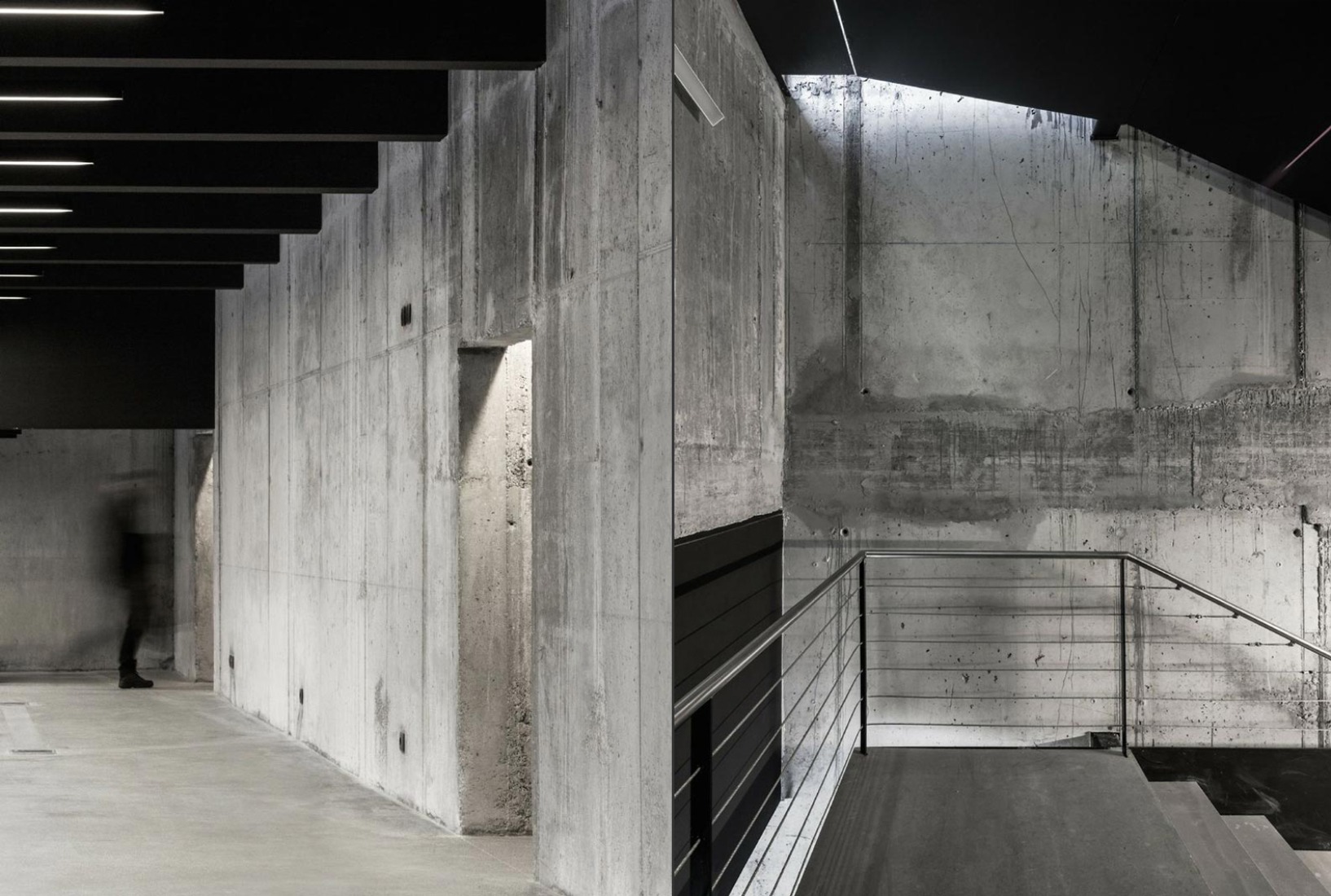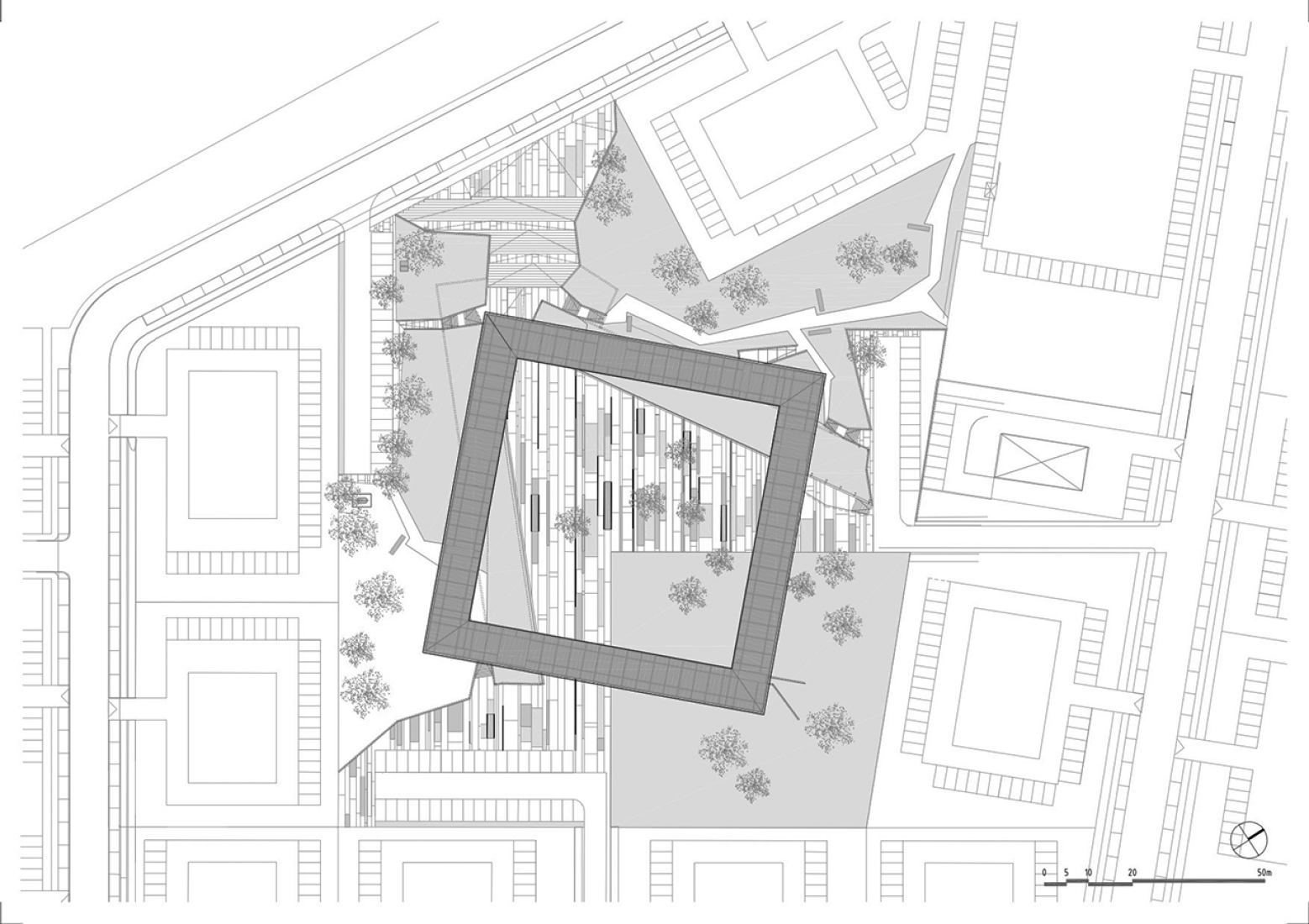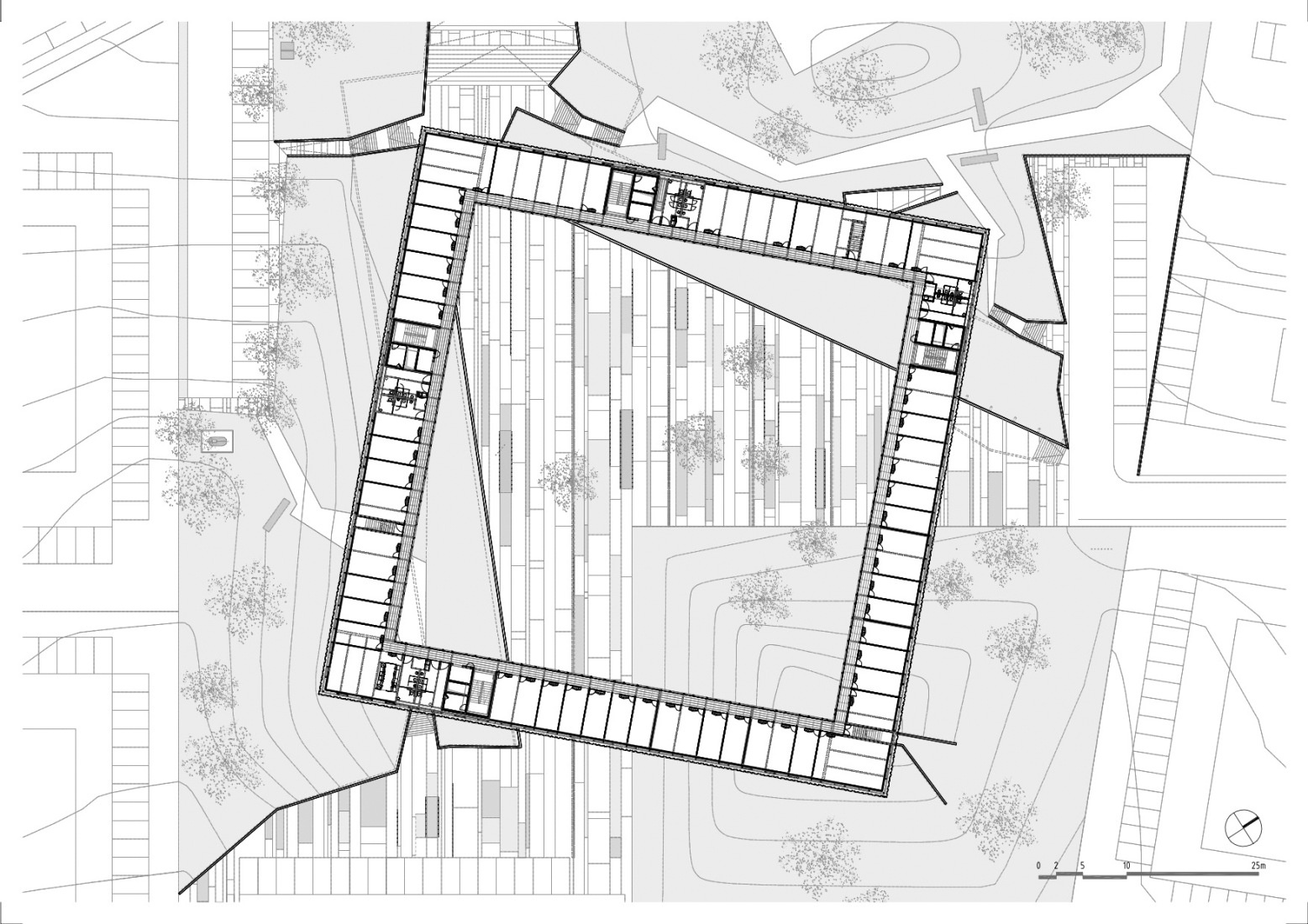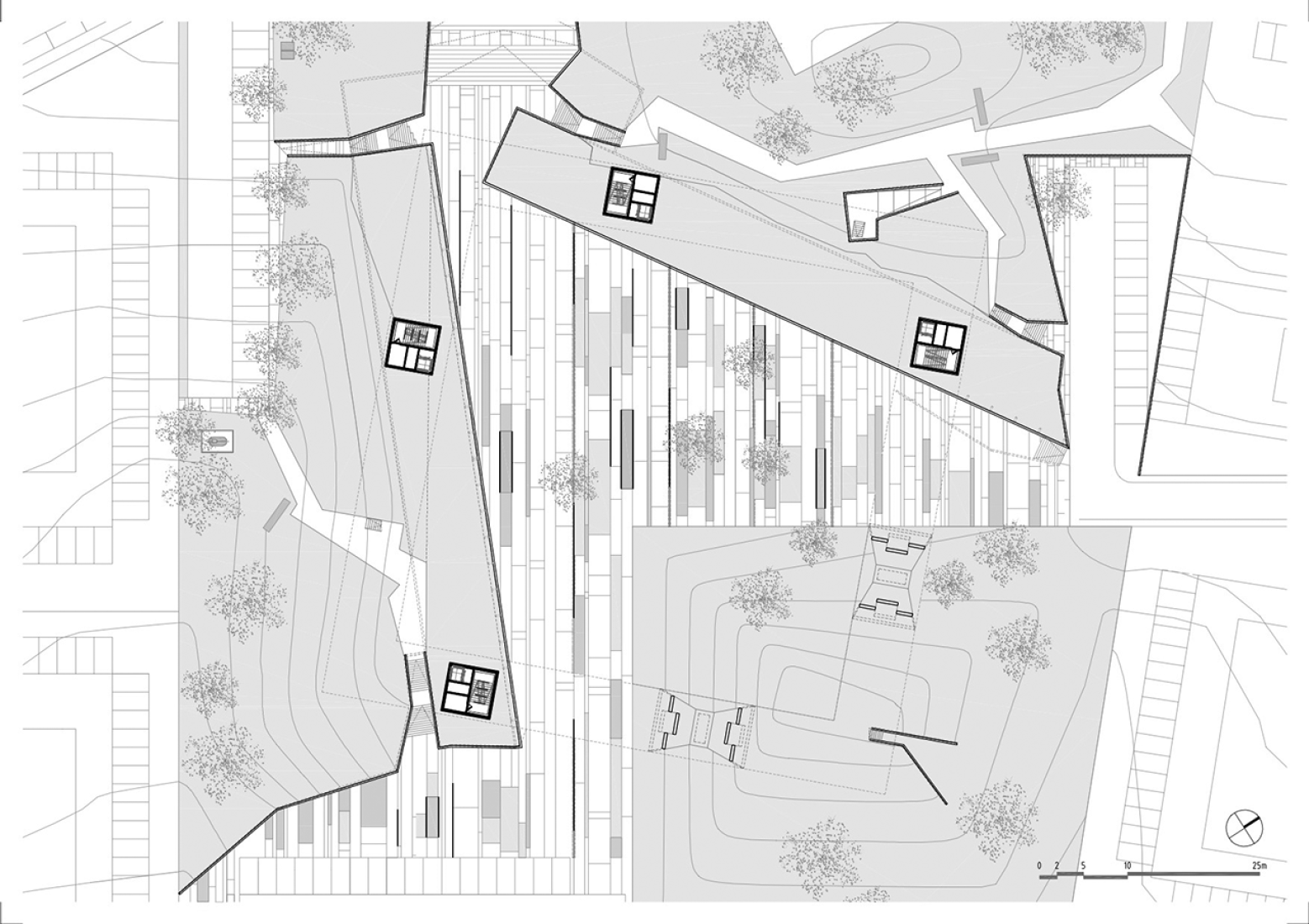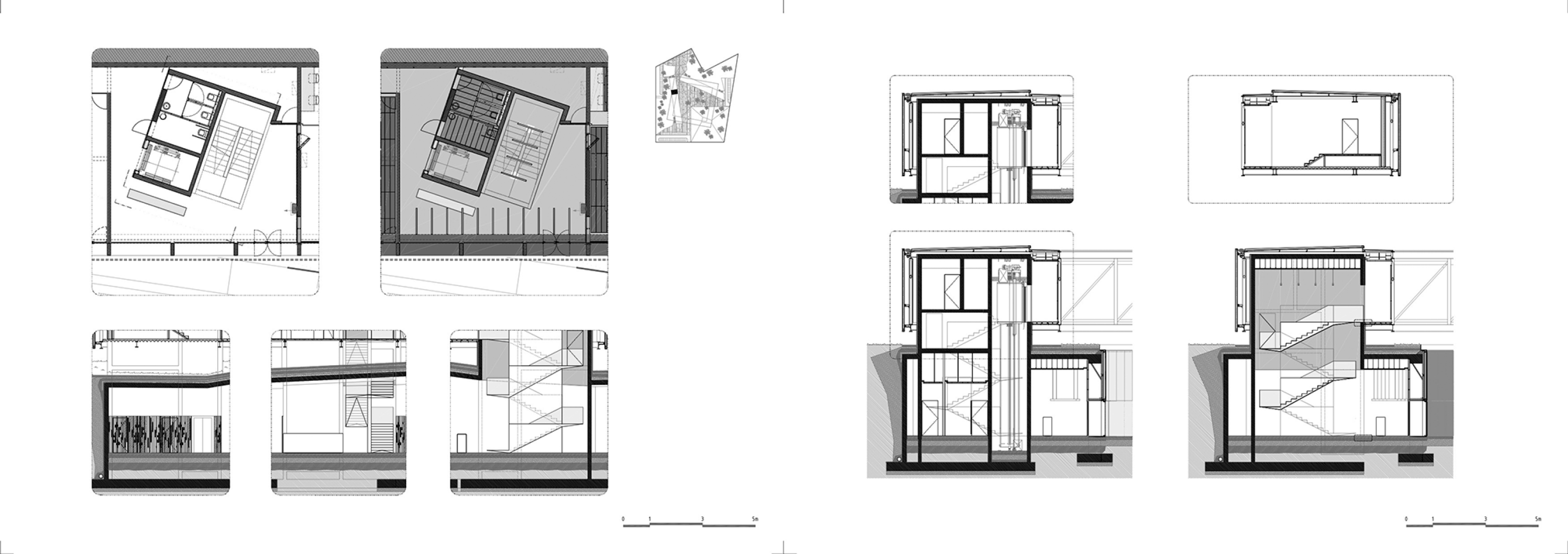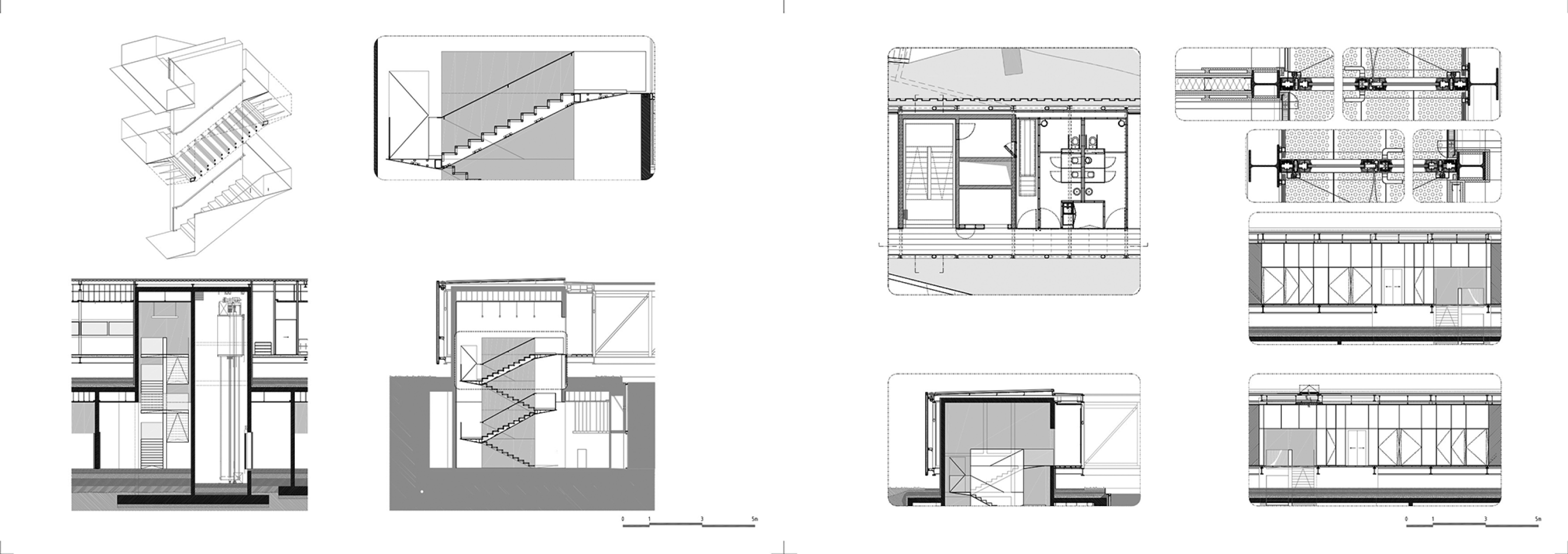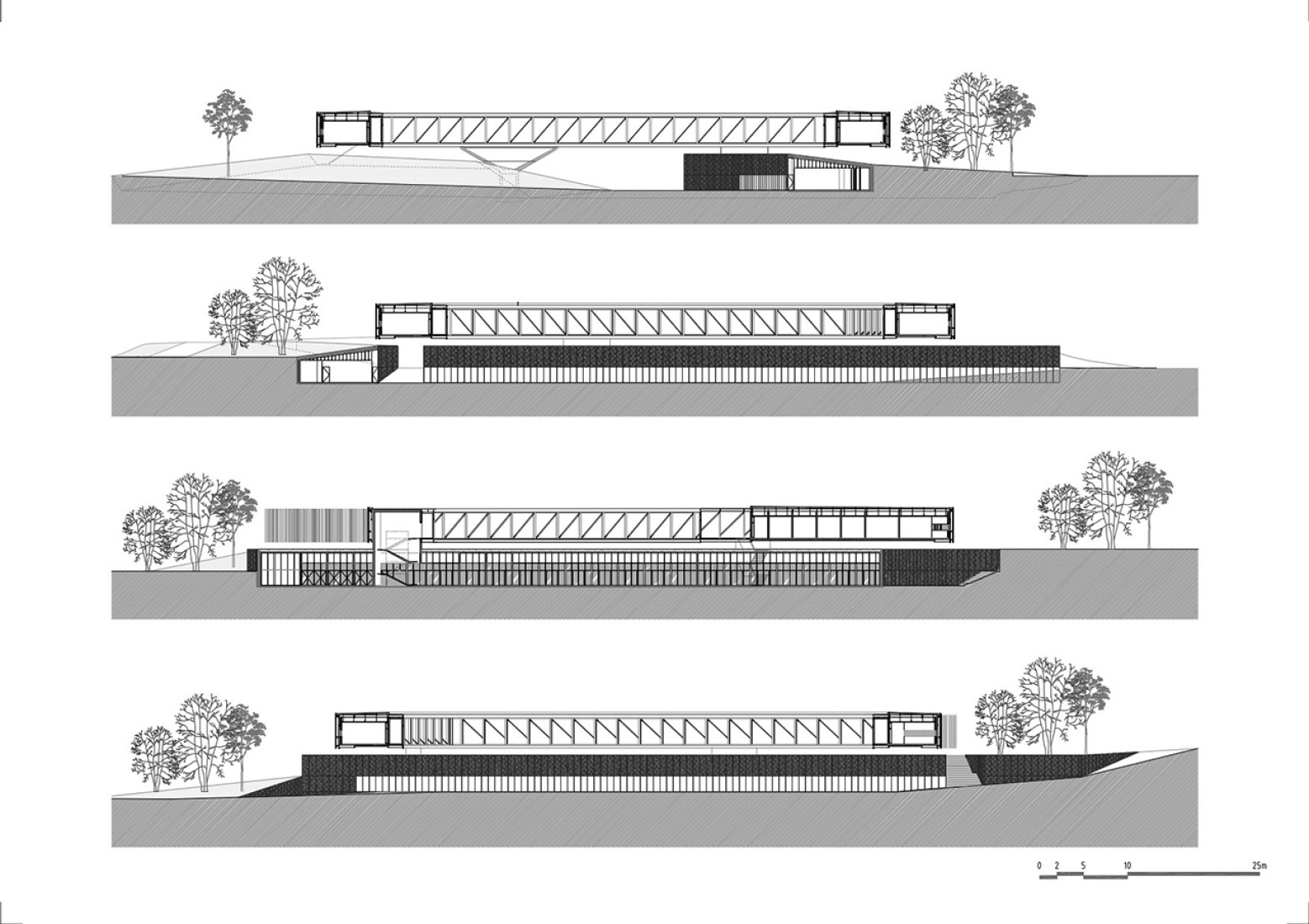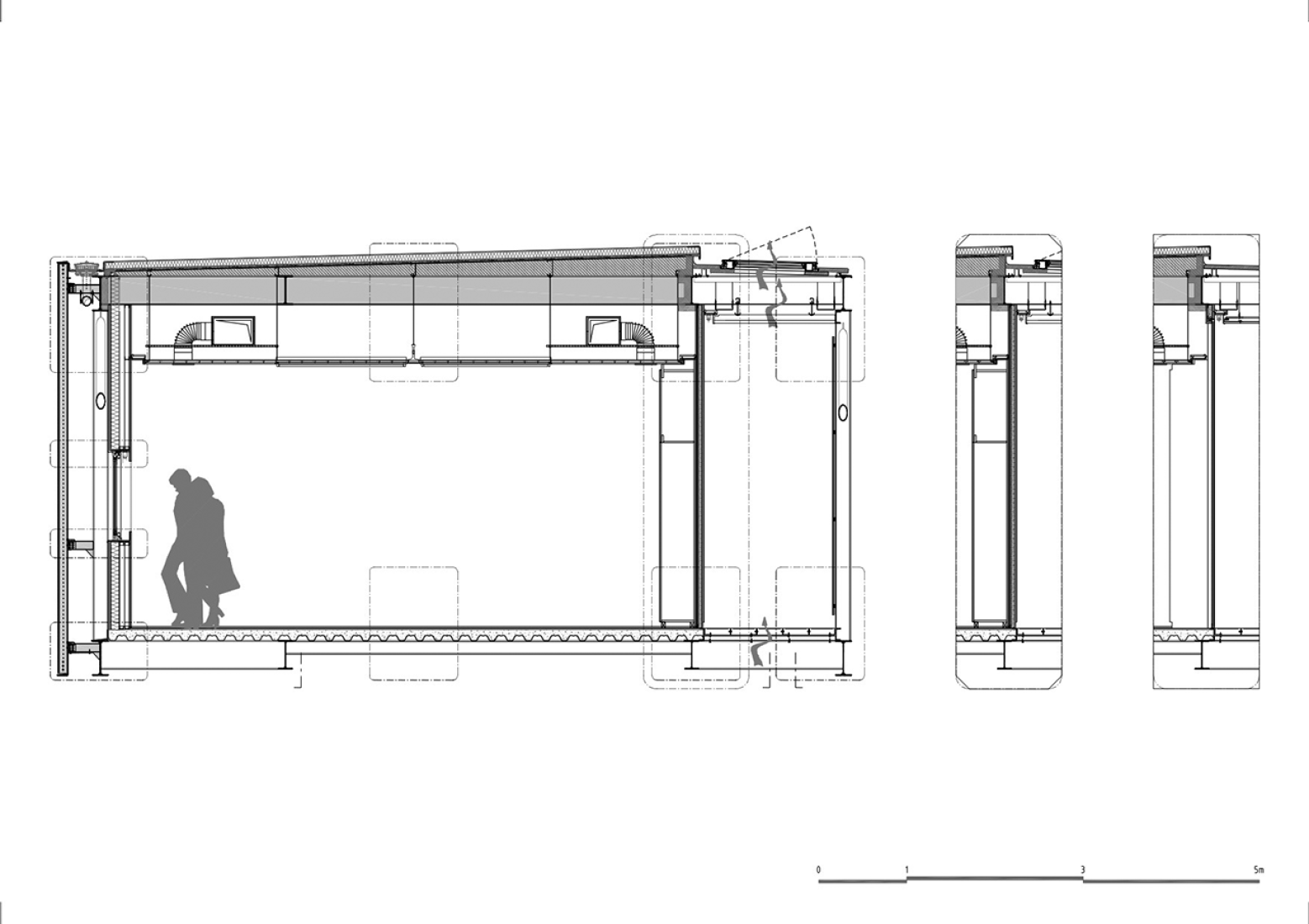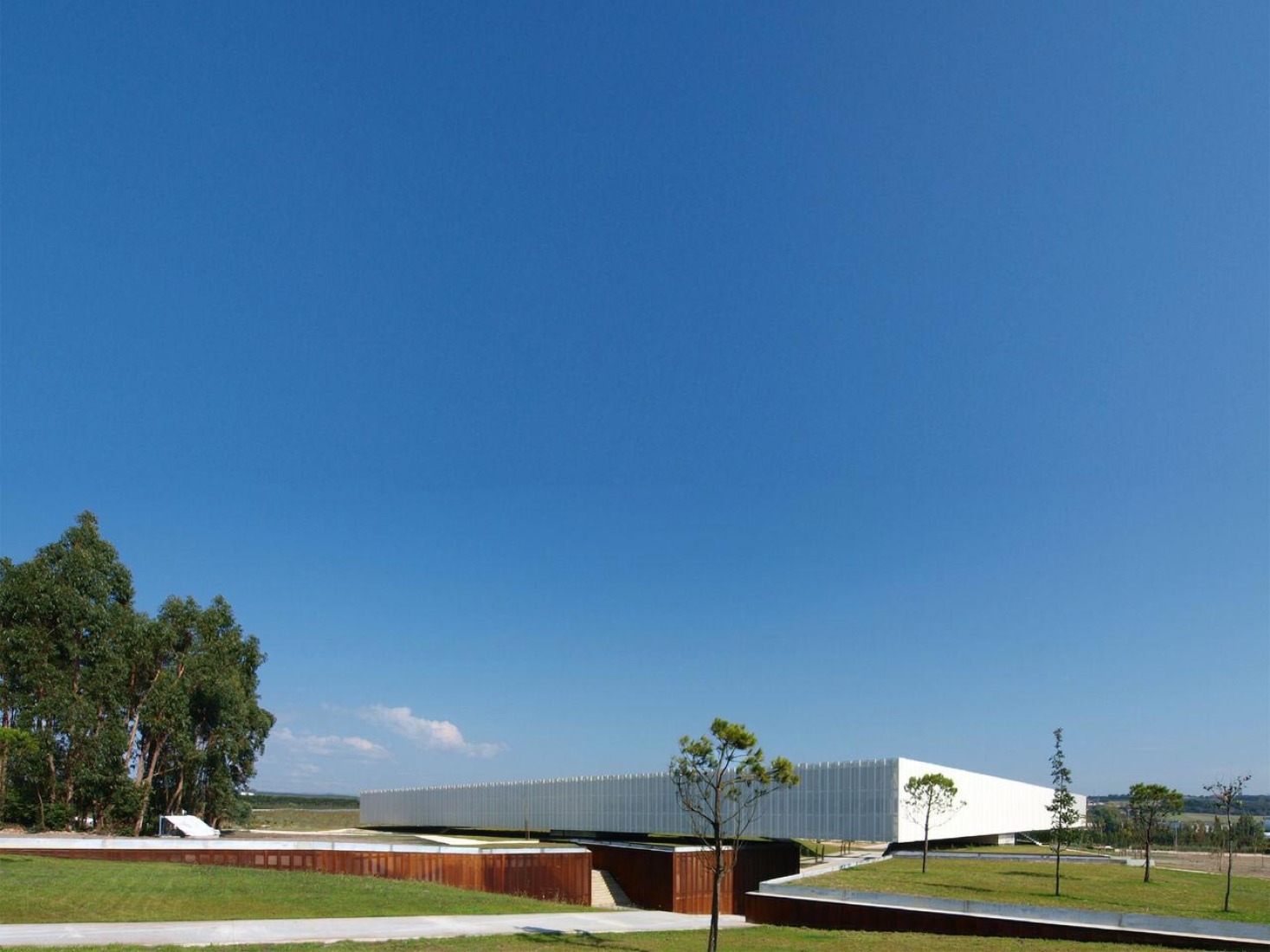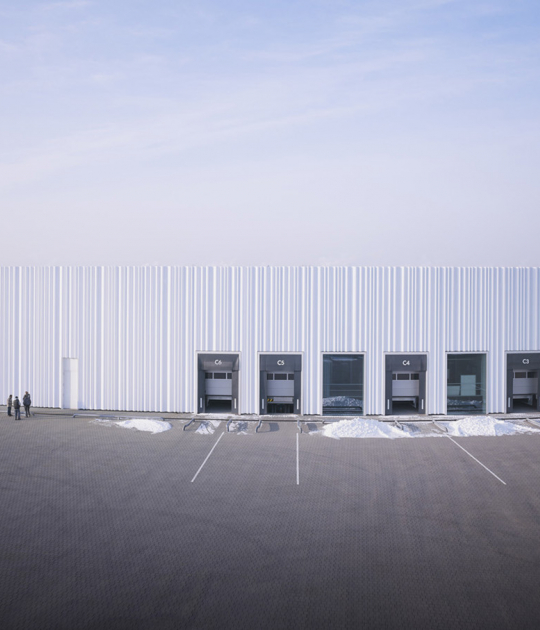The Carcavelos-based architect Jorge Mealha and his team had a challenge, how to understand the design a plaza in a rural Portuguese area, without a surrounding urban framework. Consequently, they looked to the types of public space often found in small portuguese villages. ‘Terreiros’, as they are known, are large flexible expanses that often occur despite no formal delineation being established.
"The design decision focused in the aim of creating a large public space with an easy and flexible relation with the few buildings nearby, but mainly as a complement of the surrounding natural landscape."
"The design tried to draw a building that would appear in the landscape mainly as a thin horizontal line, as a subtle long and continuous wall," explained the architect, Jorge Mealha.
The project builds a new space, minimal in its relationship with the landscape with many references to historic memory of Portuguese culture, and an image very clear. The square form is both symbolic and abstract, and the colors, white the first floor, brown the ground floor link with the ground and sky. The building is huge, if you check its built area, however its impact on the landscape is minimum and helps to build a new great anthropic landscape.
Another reference for the central courtyard came from the cloisters typical in public squares. They prompted the architect to add glass-fronted rooms along two sides of the piazza to encourage interaction between the various startups.
Description of the project by Jorge Mealha
Back in 2010 the Óbidos Municipality launched an international architectural competition. The aim of the competition was to design the Central Buildings and Main Piazza for the Óbidos Technological Park, intended as a start-up built structure to allocate creative companies.
The Technological Park site is located in the outskirts of Óbidos, a small and beautiful historic town located approximately one hundred kilometres north of Lisbon.
The Óbidos region is still characterised by a mainly rural and balanced arrangement between forest and small agricultural premises, where paved surfaces spread trough this territory in an almost random way. The plot designated to build the Óbidos Technological Park main building and main piazza uses the place where before was located the main supply site for the A8 highway construction, that today links Lisbon to the north of the country.
The design strategy proposes a solution that tries to reverse the ongoing pavement process in this territory, trough a solution that tries to reverse the this logic, increasing as much as possible the green surface. More than designing a building, the adopted strategy tries to (re)create a place where landscape is determinant for the spatial structure.
The design also dealt with the competition programme, which, in strange way for us, was asking for a main piazza for a technological park in the middle of the countryside. This program premise was the reason to arise some design doubts. How to create a piazza in the middle of this particular and still beautiful countryside? How to design (draw) a piazza without an urban fabric surrounding and evolving such place?
Either as a result of negotiation trough time within the urban fabric convenes an all range of associated functions – housing, commerce, crafts, etc – as seen in Piazza San Marco in Venice, or as a baroque symbolic design as in Praça do Comércio in Lisbon or even as in Piazza Navona in Rome where the piazza overlaps is actual geometry on top of earlier premises and programes. The piazza, as concept, can not be separated from the urban realm that conforms and shapes its limits and purpose. The study concerning the shape, uses and geometry of several piazzas and the possible adequacy to the project site emerged during the design process as a quite strange and forced solution. So, how to draw a piazza without a city, without its generator urban fabric? This design perplexity, the inadequacy of trying to design a piazza without a urban fabric, as been a key factor to look and try to search for alternative public spaces. So, the design strategy shifted and tried to search for other kind of convivial spaces who could achieve the intended public realm without designing a piazza as such.
In several places of Portugal’s countryside still exist some interesting public spaces called “Terreiros”. Characterising some settlements or small villages, those convivial spaces range from a kind of formless shape almost without buildings surrounding them, to places completely integrated and evolved by small constructions.
We found that, in a quite interesting way for us, the “terreiros”, those kind of large free spaces, where in fact quite effective public spaces despite its often formless borders.
Its in those very flexible spaces that throughout the year small communities in the region organise traditional corteges, informal open air markets, religious processions, music concerts and traditional activities or games. Much less dependent from an urban fabric, those civic spaces are very flexible and quite strong in providing opportunities to encounter and convivial activities. Then, instead of proposing to draw a urban piazza as such, the project aims to develop a large public space with similar convivial characteristics as a piazza, but much more flexible towards the relations with a building environment or geometry.
Maintaining the convivial aims expressed in the competition brief, the design decision focused in the aim of creating a large public space with either an easy and flexible relation with the buildings surrounding it, either as a complement of the natural landscape.
Other aspect of research trough the design process concerned the qualities and characteristics of large buildings in this particular territory. It was possible to notice that apart from the small built settlements that somehow mark this lusty territory, we could notice some large farms or convents and monasteries scratching thin horizontal lines in the still mainly green landscape. Those larger built structures mark the territory perspective with thin horizontal lines where of crucial importance for the design development. So, the design tried to draw a building that would appear in the landscape as a thin horizontal line, as a long and continuous wall.
On the other hand, the research and study of larger religious structures in the region, namely as Batalha’s Monastery and Cristo’s Convent in Tomar, revealed interesting aspects towards the competition programme. The cloisters presented by those religious structures where of particular effectiveness for the requested programme. In fact, as a start-up companies compound, communication and easy contact between users is a fundamental aspect. Or, a cloister structure is quite effective towards the possibility of a strong visual interaction. So, the design process went also trough the possibility of creating a solution where a kind of cloister could be related with all other design premises.
In parallel, further layers of knowledge contaminate and have given support to the ongoing design process. Two sources where of particular interest for the design team. One was the John Maeda’s book “The Laws of Simplicity” and the other the exhibition “The New Silk Roads” from Kyong Park, held at Museo de Arte Contemporáneo de Castilla y Léon in Spain a few years ago.
This exhibition from Kyong Park dealt with the expression and registry in the territory of some concepts as negotiation, conflict, superimposition, contamination and balance that where similar to the ones emerged trough the premises of the design process in development. In fact, all the design aims concerning the projecto for Óbidos Technological Park Central Building where somehow balanced and supported by similar strategies towards territory, as the expressions and notations showed in Park’s work.
The book from John Maeda “The Laws of Simplicity” as been used as a conceptual frame, as a kind of architectural treaty, as a model for architectural thought. Trough notions as reduce, organize, time, differences, context and emotion, the design research and development tried to balance the programme’s requirements with solutions as simple as possible, strongly contaminated by the law 10 on the book, the one where Maeda, states that “simplicity is about subtracting the obvious and adding the meaningful”.
The resulting design proposal is at the end quite simple and somehow literal towards the addressed references. One inner surface of the plot was partially paved with his limits suggesting a kind of natural (suggesting the result of an erosion process) borders. Part of this paved area, the “terreiro”, had some buttonholes in order to increase soil permeability. Surrounding the space, two long walls, sustain land and incorporates part of the programme. At southeast corner, a new hill is created reusing the land movements needed to imbed all the ground floor program of the building.
On top, above the created civic space and the (re)created and extended landscape, a huge but thin voided square, an office cloister, a frame, floats supported only in six points and delimits the space filtering the perspectives inwards and outwards.
The decision to imbed part of the programme underneath the landscape aims several goals. One is to increase the green surfaces within the plot. The other is to decrease energy needs in terms of AVAC systems of the building. Finally, creating the new hill, reusing the land moved to locate the ground floor program, we could somehow suggest an southeast natural limit to the “terreiro”, avoid to spent energy in order to transport that land to other place and avoid to create an embankment elsewhere.
The program was distributed in a very clear and simple way. At ground floor are located all the support support spaces as main meeting and multipurpose room, a Fablab, a small restaurant, some shops and main technical areas. On the floating cloister are located all the office units for the startup companies and a few labs. Both floors present large areas organised trough a modular structure providing huge flexibility to be adapted concerning the needs.
Materials
Mainly three materials are used. Concrete, Steel and glass. Basically, ground floor is about rough concrete, expressed as a telluric structure. On purpose, all the marks of the building process where left, acting as a mural texture and a storyboard memory. Also on purpose, the rough plasticity of concrete was seen as a expression feature and towards spatial identity. All ground floor as do to with hearth, with its rough and heavy expression.
Internal walls and floors are in concrete. A few appointments in wood (OSB panels) and painted black elements (reception counters, acoustic false ceilings, staircases) proposes an internal framework of perspectives, balancing the expression of concrete.
Externally, at ground floor, apart from windows (double thermal glass with natural color aluminium frame), two materials are used. Concrete and corten steel. The concrete floor is texturised with metal powder in order to slightly and randomly rust this pavement trough time. Part of the walls are covered by rusty corten steel panels. Those panels are made using standard modules of scaffold pavement units.
Opposed to ground floor, the first floor is all about geometry and clarity. A set of huge metal trusses, assembled to create four voided and interconnected prisms, builds a large and floating cloister. The structure rims the modularity of the startup units that occupy most of the space on this floor.
On this floor, circulation is made trough a inner and naturally ventilated circulation, protected by a huge glass surface. External walls are made with light damp proof insulated panels and internal walls have been built with light dry gypsum panels system.
On the circulation cloister the pavement is in folded perforated steel scaffold units, and false ceiling his in light aluminium sheets. The outer facade is completely covered by light, translucent and transparent white membrane, built with lacquered perforated steel scaffold units.
Text.- Jorge Mealha.
CREDITS. TECHNICAL SHEET.-
Architect.- Arch. Jorge Mealha.
Project Team.- Arch. Andreia Baptista (Coordinator), Arch. Carlos Paulo, Arch. Diogo Oliveira Rosa, Arch. Filipa Ferreira da Silva, Arch. Filipa Collot, Arch. Gonçalo Freitas Silva, Arch. Inês Novais. Structural Engineering.- JFA Engenharia (Built Project), Eng. José Ferraz, Eng. Lívio Oliveira, Eng. Bruno Santos; Electrical.- Eng. António Ferreira, Eng. Pedro Ramos. Climatisation.- Eng. Luís Graça. Fire Consulting.- Segurinis, Eng. Jorge Miranda (Built Project); Eng. Joaquim Viseu (Base
project). Hydraulic.- S.E. Serviços de Engenharia. Landscape Architect.- Arch. Mafalda Lavrador.
Construction Company.- MRG Engenharia e Construção S.A.
Client.- Parque Tecnológico de Óbidos.

